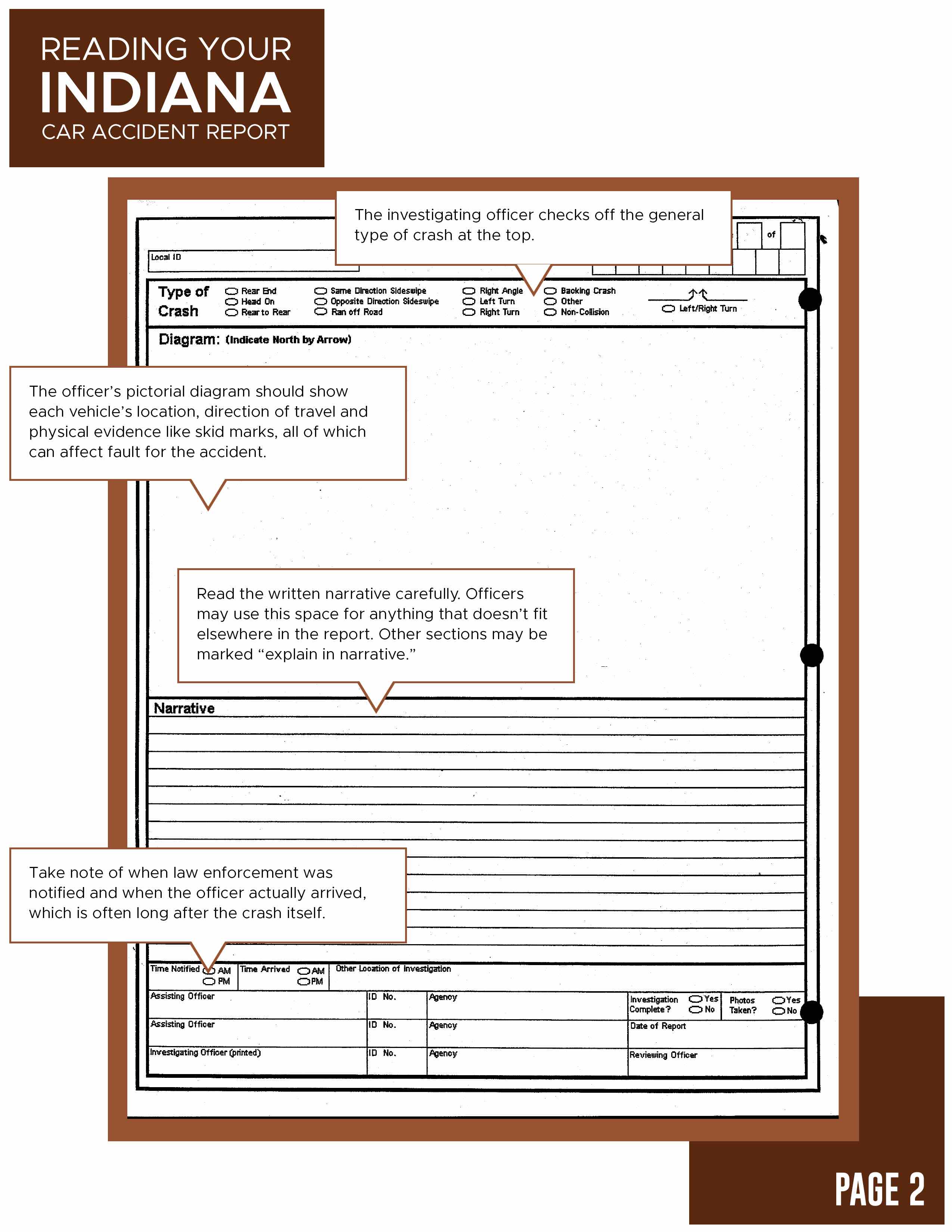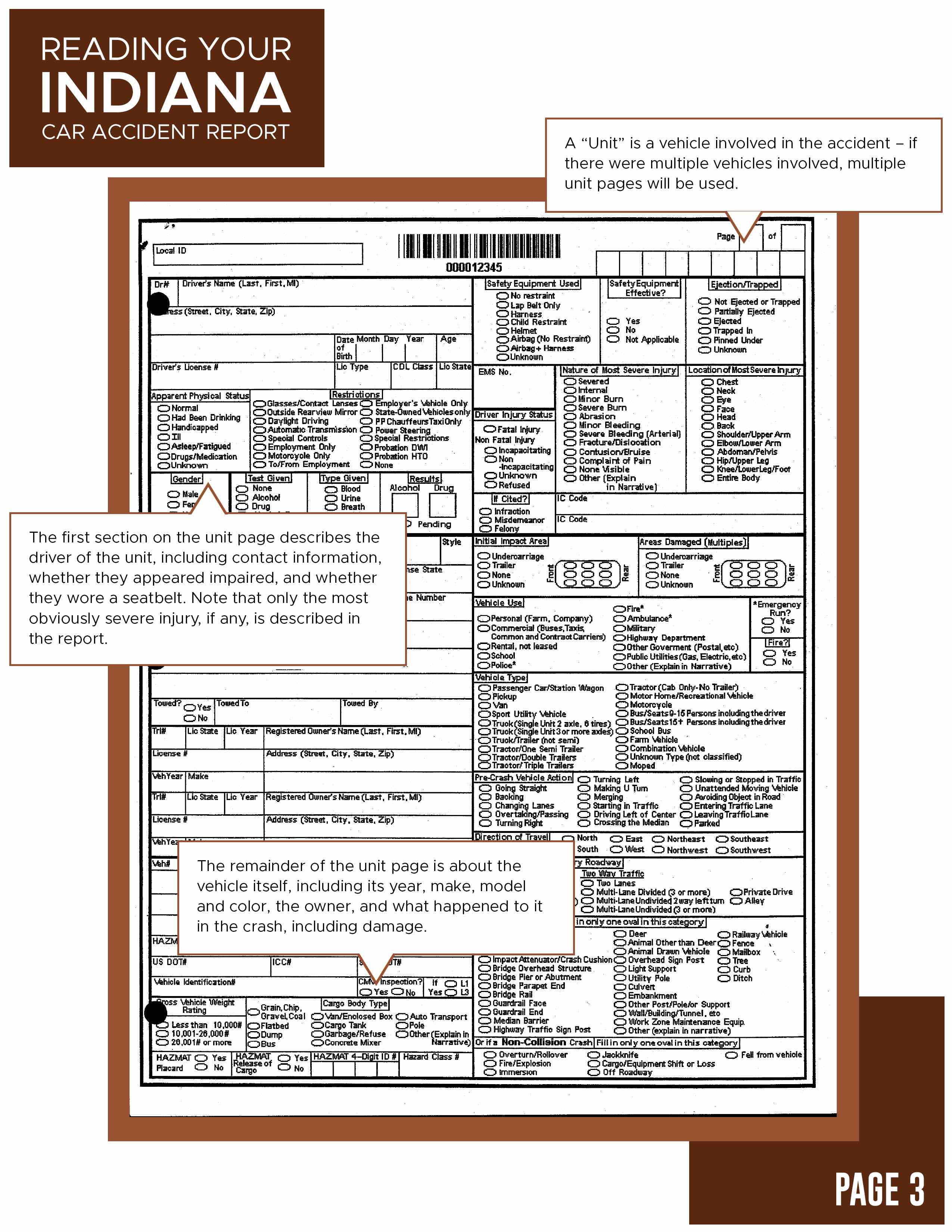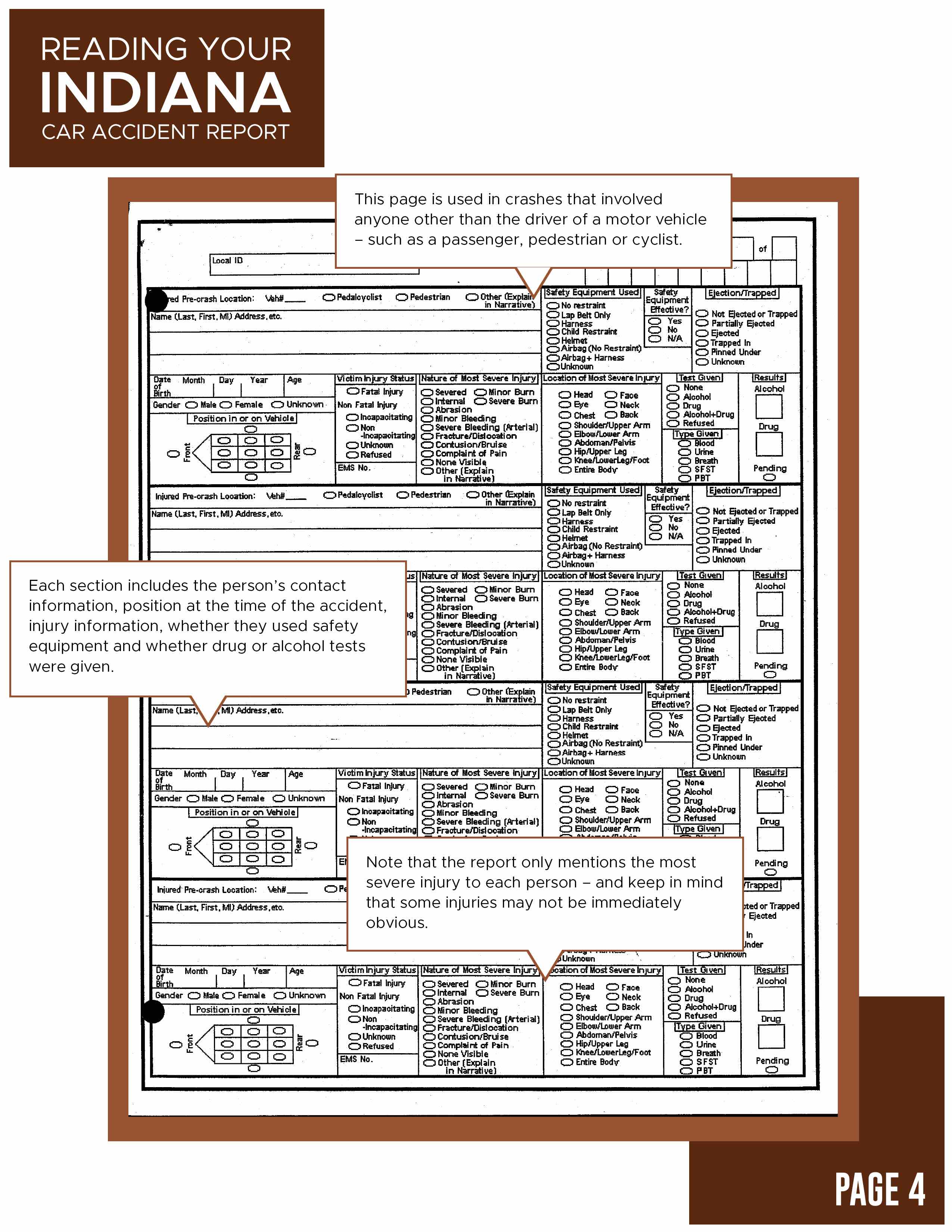In a divorce, the laws of equitable distribution distinguish marital property from separate property. Technically, only marital property, that is, proper...
After a car crash in Indiana, it’s critical that you know what your accident report (called the Indiana Officer’s Standard Crash Report) says. The insurance company will use the report to help determine fault for the crash, and if the investigating officer is called to testify, they will likely refer to the report as the basis of that testimony.
The accident report is a critical piece of evidence in your claim. Here’s how to read it:
Indiana Officer’s Standard Crash Report
https://www.nhtsa.gov/sites/nhtsa.dot.gov/files/documents/in_crashform_02_2003.pdf

Page 1
The top of the page provides an overview of the accident, including the date and time, location, number of vehicles involved, number of injuries and fatalities, and the names of up to four drivers.
Click here to download a printable PDF of Reading Your Indiana Car Accident Report.
On the left side, the officer checks off contributing factors in the accident, including driver error, vehicle malfunction, and environmental issues. Pay attention to what the officer calls the “primary cause,” but remember that’s a judgment call, not the final word.
The bottom of the page describes any property damage and provides contact information for witnesses, non-motorists (such as pedestrians) and other participants, if needed.

Page 2
The investigating officer checks off the general type of crash at the top.
The officer’s pictorial diagram should show each vehicle’s location, direction of travel, and physical evidence like skid marks, all of which can affect fault for the accident.
Read the written narrative carefully. Officers may use this space for anything that doesn’t fit elsewhere in the report. Other sections may be marked “explain in narrative.”
Take note of when law enforcement was notified and when the officer actually arrived, which is often long after the crash itself.

Page 3: Unit Information
A “Unit” is a vehicle involved in the accident – if there were multiple vehicles involved, multiple unit pages will be used.
The first section on the unit page describes the driver of the unit, including contact information, whether they appeared impaired, and whether they wore a seatbelt. Note that only the most obviously severe injury, if any, is described in the report.
The remainder of the unit page is about the vehicle itself, including its year, make, model, and color, the owner, and what happened to it in the crash, including damage.

Page 4: Non-Driver Injured Information
This page is used in crashes that involved anyone other than the driver of a motor vehicle – such as a passenger, pedestrian, or cyclist.
Each section includes the person’s contact information, position at the time of the accident, injury information, whether they used safety equipment, and whether drug or alcohol tests were given.
Note that the report only mentions the most severe injury to each person – and keep in mind that some injuries may not be immediately obvious.





